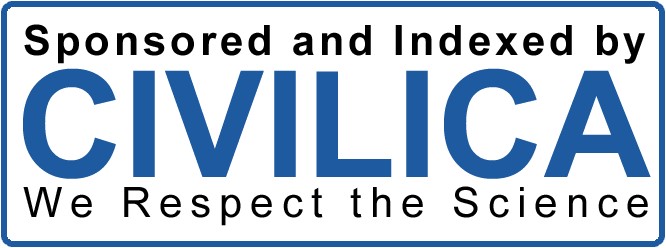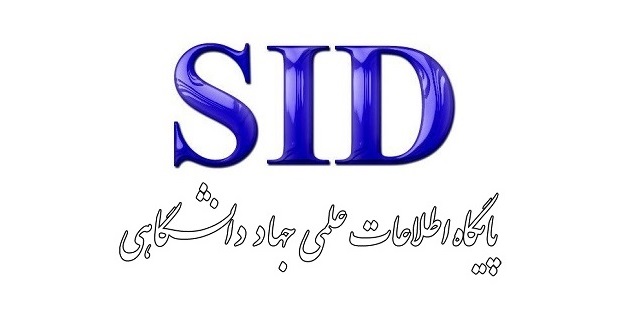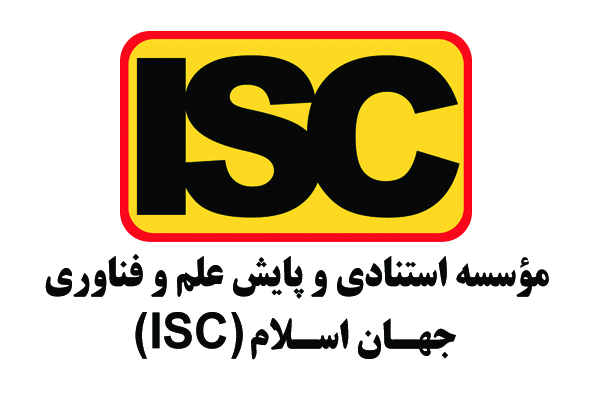Investigating the production capacity of chemical and metal industries in the conditions of embargo and their power generation problems
Keywords:
Production capacity, chemical and metal industries, sanctions conditions, job creation abilityAbstract
The main purpose of this article is to compare the production capacity of chemical and metal industries in the conditions of embargo and their job creation potential. In this article, we compared two chemical and metal industries, which are leading industries in the field of production. In order to determine the optimal level of production capacity in the chemical and metal industries with the three-digit ISIC.Rev.3 code, the Translog cost function was used. Optimum production is the equality of elasticity of scale or elasticity of cost (inverse of elasticity of scale) with one. To obtain the optimal level of production, first, a level of production was obtained from the equality of scale elasticity or cost elasticity with one, which naturally satisfies the first condition, then the second condition was obtained in order to investigate the research. The results of the analysis showed that the rate of employment generation in the chemical and metal industries in the period between (1380-1397), taking into account the amount of production, is on the rise. The efficiency and job creation rate in metal industries is higher compared to chemical industries. The growth rate of flammability in chemical industry has grown by 4.7%. If the growth rate of employment creation in metal industries was 5.4 percent. This difference can be due to the centralization of the integrated management system and the type of support provided by the government to this type of industry. The results of the analysis of the production capacity in the chemical industry sector showed that the optimal production capacity was equal to 598,647 million rials. It seems that the production companies of this sector have produced more than their capacity. And they have used their optimal capacity to the fullest. The capacity utilization rate in industries is estimated at 185%. The actual production level in metal industries is 57421.2 million rials per year, this shows that the companies in this group of industries of the country use about 33.7% of their nominal capacity. which is much less than the optimal value required.
Downloads
References
Aziz, K. A., & Norhashim, M. (2008). Cluster-Based Policy Making: Assessing Performance and Sustaining Competitiveness.
Review of Policy Research, 25(4), 349-375. https://doi.org/10.1111/j.1541-1338.2008.00336.x
Fathi, Y., Shakeri, A., Yousefi, M., & Behkish, M. M. (2018). Comparative Advantages and Readiness of Iranian
Manufacturing Industries for Free Trade and Accession to the WTO. new economy and trad, 13(2), 107-142.
https://jnet.ihcs.ac.ir/article_3212.html
Molina-Morales, F. X. (2005). The Territorial Agglomerations of Firms: A Social Capital Perspective from the Spanish Tile
Industry. Growth and Change, 36(1), 74-99. https://doi.org/10.1111/j.1468-2257.2005.00267.x
Motaghi, S. (2018). Explanation of the Effectiveness of Economic Sanctions against Iran from the perspective of Political
Economy. The Islamic Revolution Approach, 12(42), 89-106. https://www.rahyaftjournal.ir/article_66177.html
https://www.rahyaftjournal.ir/article_66177_76e862f7bc514b88f0e3527b937a0284.pdf
Motameni, M. (2019). Informal Income Estimation in Iranian Manufacture Industries. Journal of Economic Research
(Tahghighat- E- Eghtesadi), 54(3), 771-786. https://doi.org/10.22059/jte.2019.73041
Rahbar, M., dashab, m., ameri, f., & emami meibodi, a. (2021). Classification and Identifying the optimal contract structure for
Iranian gas export projects via LNG using theELECTRE- new economy and trad, 16(2), 87-118.
https://doi.org/10.30465/jnet.2021.7408
Rasekhi, S., Sheydaei, Z., & Asadi, S. P. (2017). Cost Pass through in Iran’s Manufacturing Sector. 1(1), 37-47.
https://doi.org/10.30473/indeco.2019.19351.1031
Yousefi, M., & Khadam, B. (2017). Determinants of Stagflation in Iranian Manufacturing Sector. Economics Research, 17(66),
-256. https://doi.org/10.22054/joer.2017.8208
Youssefi Hajeabad, R. (2016). The Evaluation of the Total Factor Productivity in Iran’s Manufacturing Sector. The Journal of
Economic Policy, 8(15), 153-175. http://ep.yazd.ac.ir/article_755_en.html
Downloads
Published
Issue
Section
License
Copyright (c) 2023 Journal of Technology in Entrepreneurship and Strategic Management (JTESM)

This work is licensed under a Creative Commons Attribution-NonCommercial 4.0 International License.











